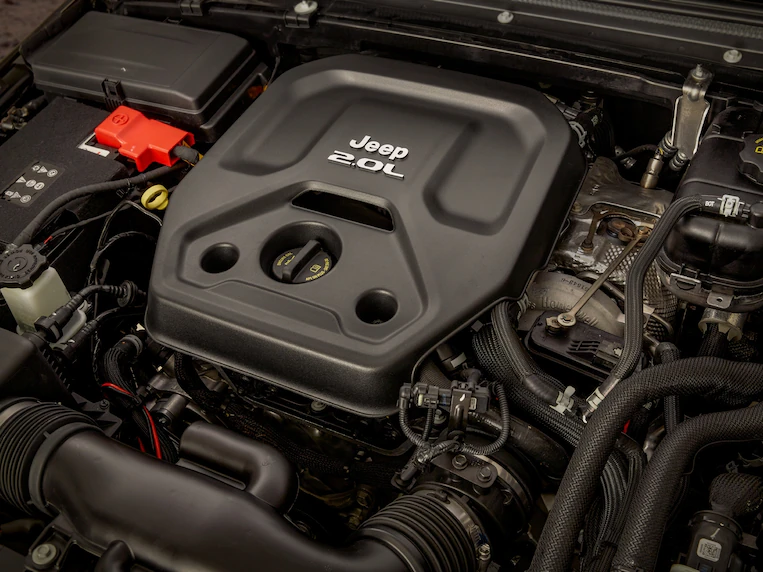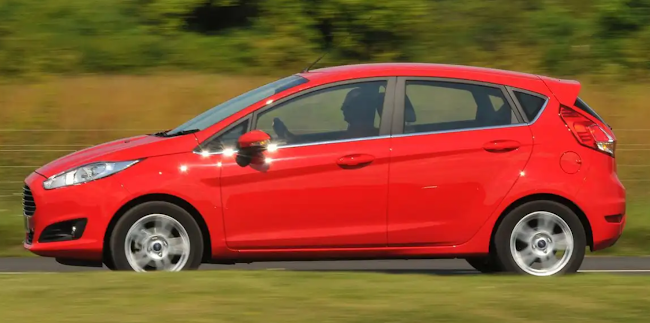What Is A Powertrain Warranty?
Whether you are shopping for a new or used bakkie, car, SUV, crossover or van, you should be knowledgeable about its powertrain warranty or lack of one.
Warranties vary wildly from one carmaker to the next. This is true of comprehensive (bumper-to-bumper) warranties and powertrain warranties. These are the two warranties comprising the backbone of a vehicle’s protection.There is also a corrosion warranty on most new vehicles and a separate hybrid battery warranty on hybrid vehicles. Tires carry their own separate warranty, as well.
Yes, it is a lot to keep track of. However, the powertrain warranty is the cornerstone of the protection because it covers your car’s most expensive components: engine, transmission, and so forth.
Let’s take a look at powertrain warranties, what they are, what they cover, and how long they last.
What is a powertrain warranty?
A powertrain warranty is typically coverage for those components responsible for creating and delivering engine torque (power) to the wheels. Basically, everything beginning with the engine and ending with the axle(s) for the drive wheels gets covered.
Each warranty ends on an expiration date. Its shelf-life gets expressed in years and miles. Hyundai, Kia, Genesis, and Mitsubishi offer the best new car powertrain warranties in the business at 10 years/160,000 km.
What this means is, that the powertrain will be covered for either 10 years or 160,000 kilometres, based on which comes first. In other words, the powertrain coverage doesn’t extend beyond 10 years if that milestone is reached first or 160,000 km if that comes first.
Several carmakers offer powertrain coverage without a mileage limit. Their warranties will expire after a specified number of years, but it doesn’t matter how many miles you drive. Cadillac, Lincoln, Infiniti, and others offer such warranties.
As long as the powertrain warranty is active, if any covered component fails, the automaker will fix or replace it free of charge.
What does a powertrain warranty cover?
As stated above, generally, the powertrain begins with the engine and ends with the axle or axles, in the case of all-wheel drive (AWD). But let’s get a little more specific.
The Powertrain warranty usually covers:
The engine and its parts
Several parts comprise the engine. It’s the most expensive of the powertrain components. Usually, a powertrain warranty will cover nearly all of its parts. These include:
- Oil pan
- Cylinder block
- Heads
- Valvetrain
- Fuel injectors
- Timing belt
- Flywheel
- Fuel, water, and oil pumps
- Gaskets and seals
- Other internal parts
For the most part, the warranty covers major failures of the powertrain components.
What powertrain warranties don’t usually cover
A powertrain warranty doesn’t cover anything not directly involved in propelling the vehicle. For example, the air conditioning system isn’t covered under the powertrain warranty. Nor is the steering system.
Here are other components and instances the carmaker’s powertrain warranty doesn’t cover:
- Wear-and-tear parts like spark plugs, air filters, oil filters, fuel filters, clutch, brake pads, and CV joints.
- Issues or damage caused by aftermarket components.
- Any alteration specifically prohibited in the warranty.
- Damage caused by an accident or collision.
- Misusing or abusing the vehicle.
- Acts of nature.
- Using contaminated or poor-quality fuel.
- Failure to follow the carmaker’s maintenance schedule might void the warranty.
Is a powertrain warranty right for me?
When purchasing a new car, you don’t really need to ask yourself this question. A powertrain warranty is part of the new car package. However, what you do need to consider is, how long do you plan to keep the car? Some powertrain coverage is simply better than others because they provide protection for longer terms.
Here’s the truth about your car’s powertrain: It will fail at some point. The older and more use a vehicle gets, the more likely a powertrain failure is.
New cars
Most new car powertrain warranties are good for five or six years and 60,000 or 110,000 km. If your plan is to turn over that car before the powertrain coverage expires, no worries. However, if you are going to keep it longer, then you should ask yourself if you want longer powertrain protection.
You can achieve that longer protection by either buying a vehicle with a longer powertrain warranty or buying an extended powertrain warranty. If you choose to take the extended-warranty path, we recommend securing a warranty backed by the carmaker.
If you choose to shop for third-party warranty companies, we urge you to do your homework. Closely read the fine print and verify their customer satisfaction ratings.
Typically, whatever remains of an automaker’s powertrain coverage is transferable to another owner when you sell or trade-in your vehicle.
Used cars
If you are shopping for a used car or bakkie for sale, some Certified Pre-Owned (CPO) programs include a form of extended powertrain coverage. This is your best bet in securing dependable protection.
If you buy a used bakkie for sale that’s not CPO, there are also third-party companies that underwrite powertrain warranties, depending on the age and mileage of the car. Again, it’s buyer beware. Take some time and research any third-party warranty provider.
Powertrain warranty vs. bumper-to-bumper coverage
We’ve already established that the powertrain and bumper-to-bumper warranties are the most important elements of your vehicle’s protection network.
The major differences between the two are what they cover and how long they last.
We use “bumper-to-bumper” as shorthand for a carmaker’s comprehensive warranty. In many cases, it’s not exactly bumper-to-bumper. That is to say, it may not cover every little thing that goes wrong with your vehicle while it’s in effect.
However, the bumper-to-bumper warranty covers pretty much everything the powertrain warranty doesn’t. It still doesn’t cover wear-and-tear components like tires, light bulbs, and fuses.
Powertrain warranties last longer than bumper-to-bumper warranties. We mentioned Hyundai and others with that sweet 10-year or 160,000 km powertrain warranty. Hyundai’s bumper-to-bumper warranty is 5 years or 95,000 km. Ford’s bumper-to-bumper warranty is 3 years or 60,000 km, but Ford’s powertrain coverage is for 5 years or 95,000 km.
Powertrain warranties almost always last longer than the bumper-to-bumper warranty.
Lifetime vs. limited powertrain warranties
Lifetime powertrain warranties? Who wouldn’t want that? Well, there’s more to it than simply checking the “Yes” box and forking over some extra cash.
Lifetime powertrain warranties
Indeed, some dealers offer lifetime coverage, but there’s no such thing as a free lunch. This is coverage separate from the manufacturer’s powertrain warranty. It’s provided by the dealer and any warranty repairs covered by the lifetime warranty must be performed by that specific dealer.
Moreover, maintaining that warranty coverage might require a very strict scheduled maintenance regimen beyond what the carmaker requires. Furthermore, the lifetime warranty may have a restricted use clause or two prohibiting towing and other assorted uses.
Unlimited powertrain warranties also usually won’t cover engine components like seals, gaskets, and other parts.
The good news, though, is you don’t need to worry about the terms of any unlimited warranty until the carmaker’s limited warranty expires.
Limited powertrain warranties
These warranties work exactly as their name implies. They are in force for a specific length of time or a stated number of driven miles. For example, Toyota’s 5-year/95,000km powertrain warranty offers very defined coverage limits.
There are components these limited powertrain warranties won’t cover like CV joints, but they tend to provide a wider range of covered parts than unlimited warranties.
.
.
.
Info sourced from https://www.kbb.com/car-advice/



Comments
Post a Comment